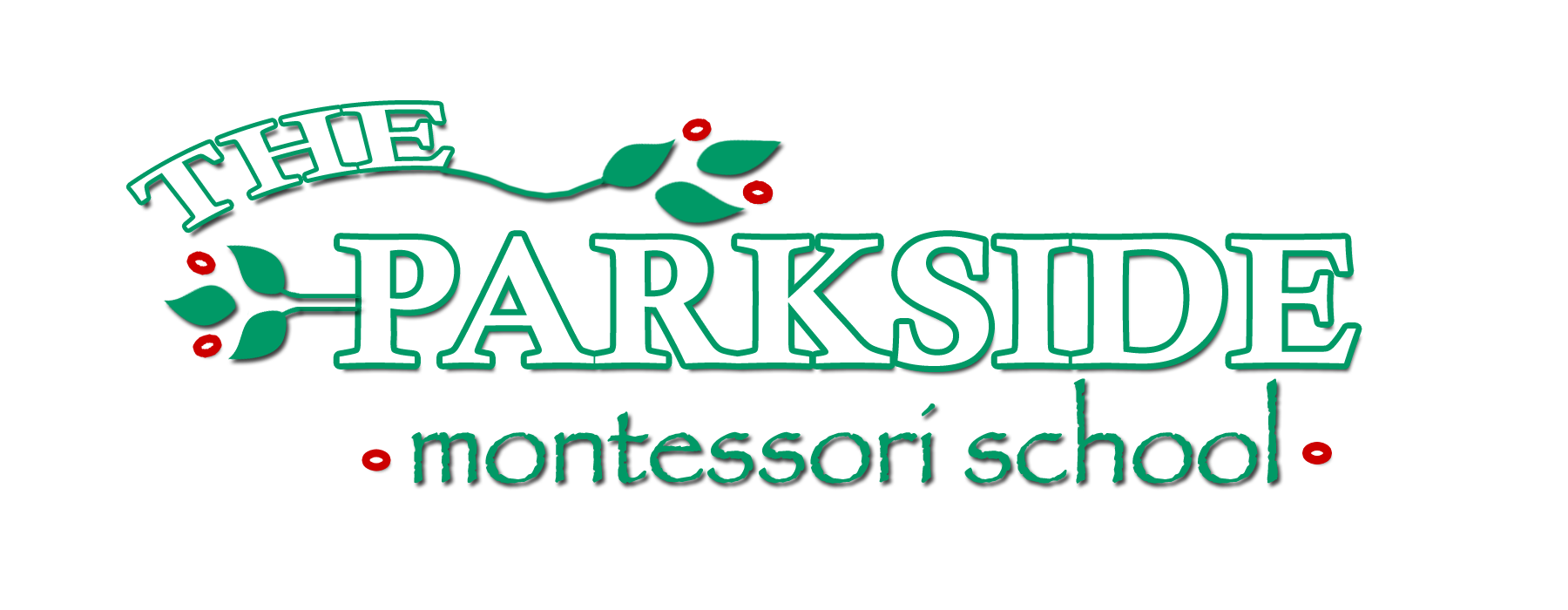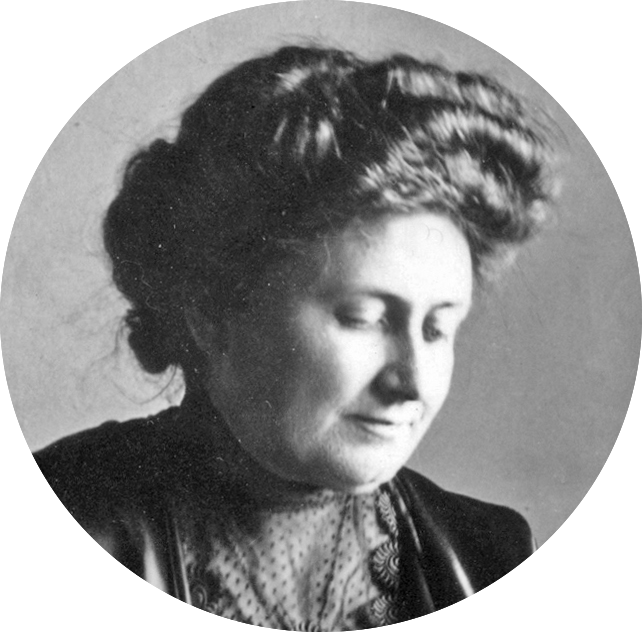The Parkside Montessori School
53 Norwood Avenue
Upper Montclair, NJ 07043
973-509-7379
parksidemontessori@gmail.com


NEWS





.
“The instructions of the teacher consist then merely in a hint, a touch - enough to give a start to the child. The rest develops of itself.”
Dr. Montessori’s
Own Handbook
.

We have completed our first full month of school, and the children have accommodated themselves very well to their classrooms, classmates and school routines. They are also comfortable and happy with their teachers as we are with them.
As we move into October, we will be finishing our study of beach and sea life, although some of those materials, due to popular demand, remain on the shelves. The children are really enjoying our baskets of sea animals. They paid close attention as we introduced each new sea animal, and they are remembering interesting details of the animals as they work with them on a mat.
With the arrival of a new season, we will begin our study of all things fall, including apples, pumpkins and leaves. On circle we will discuss the transition from summer to fall including the changes in the color of the trees and the grass, the falling temperatures, and the changes in the light of the sky. As we explained last month, with each new monthly theme, related activities will be added to every classroom area including Practical Life, Sensorial, Language, Math, Art and of course our Library Corner.
In the beginning of the month we will look at the different kinds of apples, how they look and how they taste including the MacIntosh, Delicious, Golden Delicious, Granny Smith and Honey Crisp. Many children have already gone apple picking, so there is some familiarity with apple kinds. A little later in the month we will be studying the many kinds of trees in our area and the leaves they produce such as maple, oak, sassafras, aspen, gingko, and many will be able to identify those trees and leaves by October’s end.
Again, all of our areas will contain new exercises related to fall.
In Practical Life, while the children are continuing to wash the baby, scrub the table and go fishing, we will also introduce apple cutting and pumpkin scrubbing as well as spooning and tweezing apples, leaves, soccer balls and pumpkins. Napkin folding will also be brought in.
In Sensorial, in addition to the many beautiful autumn puzzles, we will have trays of different apples for the children to taste and then decide which one they like the best. We will also be bringing in the brown stair, red rods and geometric solids.
On our Language shelves there will be matching and sequencing cards and objects, all fall related. We will place the different kinds of apples in pairs on trays for the children to look at and identify. After the study of apples we will bring in real leaves and place them on large trays for the children to sort, match and identify as they did earlier with our apples. On our Math shelves we will count mini apples, pumpkins and leaves. Of course our classroom libraries, puzzle corners and art projects will also reflect autumn themes.
Another Parkside October tradition and fun activity is bulb planting. The bulbs (crocus, daffodil, tulip and hyacinth) will be planted by the children in areas near our playground. Each bulb has its own unique look which the children will easily see, including the very tiny crocus, the smooth-skinned tulip, the large brown and jagged daffodil and the purple-skinned hyacinth. On circle we will show how we get ready for planting by bringing in a large, shallow container of dirt and using the necessary tools (claw, spade, bulb planter and watering can) for the prepping and planting of the bulbs into that box of dirt. Then, when we move outside to do the actual digging and planting, the children will have a good idea of how to do it. We explain that the planted bulbs will not be blooming right away, but will rest in their “cozy beds” all through the fall, winter and early spring. Snow, rain, ice and cold temperatures will not hurt them. What could become a problem is the hungry squirrels who like to dig and munch on bulbs. For that reason we cover our beds with pine straw as the scent of the straw deters the squirrels. That part of the lesson is particularly interesting to the kids, and when we are outside we keep our eyes open to watch for the squirrels as they scamper about, hopefully not disturbing our beds. As in the past, our planted bulbs should emerge next spring as beautiful and colorful flowers. We have done this lesson of bulb planting for many years, and each spring, for the most part, more color is added, creating for our students a sense of excitement for the new season after a long winter. They are also excited to see the results of the efforts we all made months earlier to beautify our outside areas.
Of course Halloween is a big event in October, and this year it falls on a Friday. The children should not wear their costumes to school. It makes what is already an exciting day a little too long for children so young. We will be celebrating with songs, treats and games, but not costumes. We do have a large repertoire of Halloween songs and games, and there will be pumpkin and other Halloween projects at the art table. We will also be carving pumpkins into Jack-O-Lanterns on circle.
The last theme which we will begin during this very busy month of October is our theme of Peace. As parents and teachers we know that children thrive in a caring, loving and supportive community, and we have always tried to create this for our students. So it is fitting that we begin our Peace curriculum early in the year. It includes many concrete lessons which will be presented over the course of the next few months. We explain, again on circle, that Peace in its simplest form means caring about one another and showing kindness in the smallest of ways. Some examples of peaceful acts are helping friend roll up a mat or put away their work, helping a teacher clean up after snack or lunch, giving up a seat next to the teacher for someone who really seems to need it, sharing play-doh with someone who thinks they need more than they have, comforting an upset friend, taking the hand of a child who needs a partner and cannot find one and sharing an activity with someone who is looking to join a friend. Our first Peace lesson is an explanation of the Peace Bowl which is in the Peace Corner of every classroom. Next to the bowl on a low table is a dish with pretty stones. We encourage the children to place a stone in the Peace Bowl if they feel that have shown kindness to another. For each act they place one stone in the bowl. We did some play acting on circle to demonstrate what a peaceful actions may look like. At first they may not even realize that they have been peaceful friends, and of course they do love to throw the stones in the bowl (perhaps the noise it makes?!). However, eventually, with our verbal encouragement, the idea of being peaceful begins to take hold, and even our youngest students will hopefully understand the value of being kind and caring to others in their community. Later, our Peace Corner will be used to facilitate conflict resolution as well as helping our children deal with feelings of sadness and anger that they may experience. We will talk more about that in the next few months.
“Education is at the heart of any strategy for the
construction of a culture of peace. It is through education
that the broadest possible introduction can be provided to the
values, skills and knowledge which form the basis of respect for
peace, human rights and democratic principles."
UNESCO and a Culture of Peace-Promoting a Global Movement
UNESCO Publishing, 1997, p. 255 London Lectures, 1946




